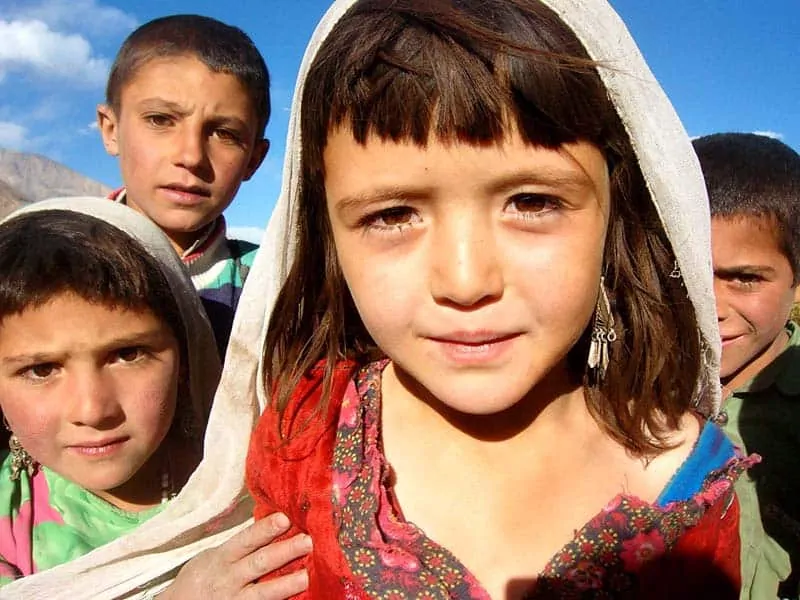Ethnic cleansing of Hindus in Afghanistan


The Muslim invasion of actual India began in the year 980 CE when Sabuktagin fought Raja Jaya Pal in Afghanistan. Today’s Afghanistan is a Muslim nation divided from India by Pakistan, itself a Muslim nation. Afghanistan, however, was also a place where Buddhists and Hindus lived around 980 CE.
The word “Afghanistan” derives from the Sanskrit phrase “Upa-Gana-stan,” which translates “The place inhabited by united tribes” in English.
This was the region from which Shakuni, the ruler of Gandhar in the Mahabharata, descended. The Paktha tribe, which is recorded in Vedic literature, gave rise to the Pakthoons. This region had a predominance of Hindus until Sabuktagin from Ghazni invaded and deposed the local Hindu ruler, Jaya Pal Shahi, in the year 980 C.E.
An old Hindu temple once stood where Kabul’s main mosque now sits, and an Islamic Afghan legend recounts the Muslim hero Sabuktagin as fighting with a sword in each hand to vanquish the Hindus and destroy their temple to put a mosque in that place.
The Shahi Hindu kingdom’s borders were extended by Sabuktagin’s conquest from Kabul to the Hindu Kush mountains. Mahmud Ghazni dubbed the region Hindu Kush, which means “killer of Hindus,” in reference to the large number of Hindus who perished en route to Afghanistan in order to live as captives. Following this disaster, the Shahis changed Udbhandapura to be their capital instead of Kubha (Kabul) (modern Und in NWFP). Mahmud Ghazni, the son of Sabuktagin, continued to battle the Shahis and took Und. The Shahis then relocated their capital to Lahore and then to Kangra in Himachal Pradesh.
Leading epigraphist and archaeologist Prof. Ahmad Hasan Dani of the Quaid-E-Azam University of Islamabad spoke about the discovery and importance of the inscription, which described the Hindu king Veka and his devotion to Lord “Siva,” during the current Indian History Congress in this location.
Dani stated in a paper titled “Mazar-i Sharif inscription of the time of the Shahi ruler Veka, dated the year 138,” submitted to the Congress, “If historians preferred to revise the date of the first Hindu Shahi ruler Kallar from 843-850 AD to 821-828 AD, the date of 138 of present inscription, if it refers to the same era, should be equal to 959 AD which falls during the reign of Bhima.”
There were various spelling errors in the inscription, which comprised eleven lines and was written in the 10th century AD’s “western Sarada” style of Sanskrit. The first letter “OM” is absent because the stone’s top left corner is somewhat fractured, he explained.
“The ruler Veka occupied by eight-fold armies, the earth, the markets, and the forts,” reads the inscription. For the benefit of himself and his son, Parimaha (great) Maitya constructed a temple of Siva holding Uma at Maityasya during his rule.
“The inscription reveals the monarch’s name as Shahi Veka Raja and bestows upon him the qualification of “Iryatumatu Ksanginanka”… and (he) looks to be the same king who bears the name of Khingila or Khinkhila who should be acknowledged as a Shahi ruler,” Dani stated.
Dani said, “He might be Veka deva’s ancestor. He might be Veka deva’s direct forerunner because his coins were discovered in Afghanistan and the Arab monarch Yaqubi mentioned him. Inscription and coin evidence both point to Veka or Vaka as a legitimate autonomous monarch of northern Afghanistan.”
“So, beyond the Hindukush, we discover another branch of the Shahi rulers in northern Afghanistan. By using his eight-fold army, Veka is claimed to have conquered the ground, the marketplaces, and the forts, indicating that he must have personally defeated the Arab kings of southern Afghanistan.”
According to the research, the dynasty appears to have broken during the reign of Hindu Shahi monarch Bhimapala; one branch, led by Jayapala, ruled in Lamaghan and Punjab, and another branch, led by Veka, ruled in the northern portion of Afghanistan.
Afghanistan which has 99.7% Muslim population once had a robust Hindu (and later Sikh) community that dates back to the Indus Valley Civilization, more than 3,000 years ago. The deliberate persecution of non-Muslims in Afghanistan is on the verge of eradicating the historical population of Hindus and Sikhs.
During the Soviet-Afghan conflict, a large number of Hindus and Sikhs immigrated to Europe and India (1979–89). The Pakistan-backed Mujahideen (Islamic guerrilla fighters) in Afghanistan won the conflict and seized power with the help of the US Central Intelligence Agency.
The Afghan mujahideen who had gained power with the aid of Pakistan and the US went on to create the Taliban in the early 1990s. The Taliban era constituted the deadliest moment for Hindus and Sikhs in Afghanistan, who endured relentless harassment, persecution, and murder for even the smallest proclamation of their faiths, as well as forced property confiscation. There were numerous kidnappings and murders of Sikhs and Hindus. Even Sikhs and Hindus were had to wear yellow armbands by the Taliban as a form of identification, evoking the yellow Star of David that Jews were made to wear by Nazi Germany. In Afghanistan, a lot of these retaliation and persecution still exist.
Source: Hinduism (The forgotten facts)
American hindu foundation report :https://www.hinduamerican.org/blog/5-things-about-hindus-sikhs-afghanistan
DISCLAIMER: The author is solely responsible for the views expressed in this article. The author carries the responsibility for citing and/or licensing of images utilized within the text.
